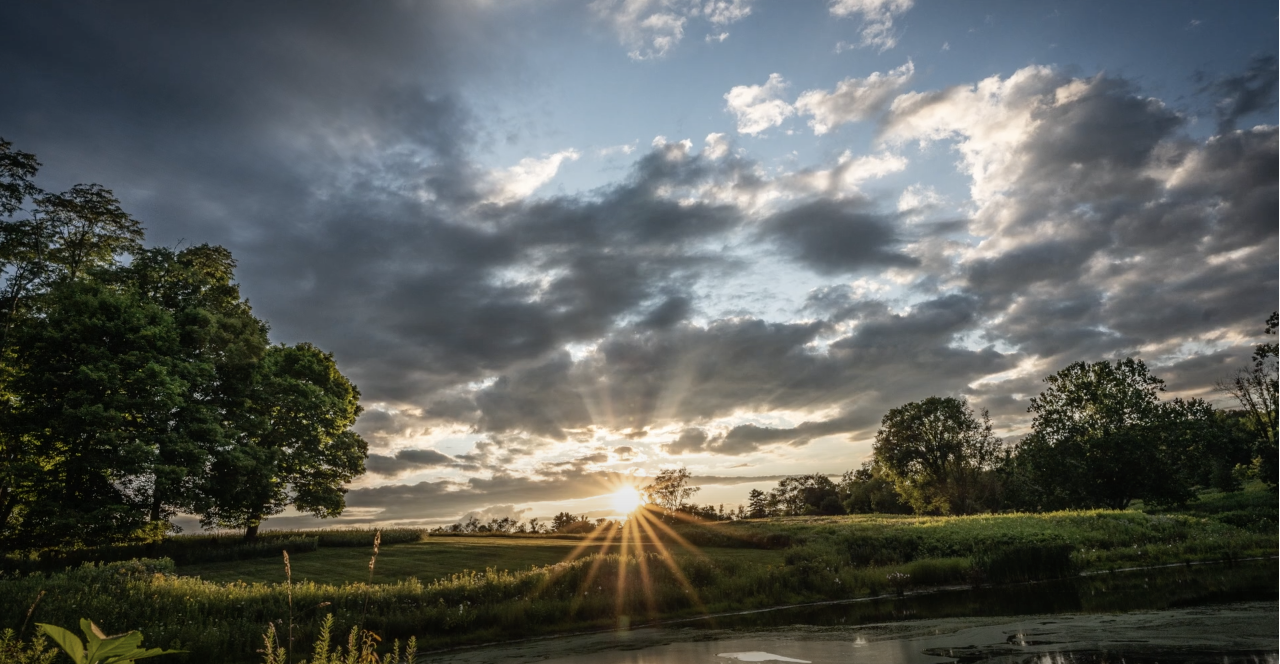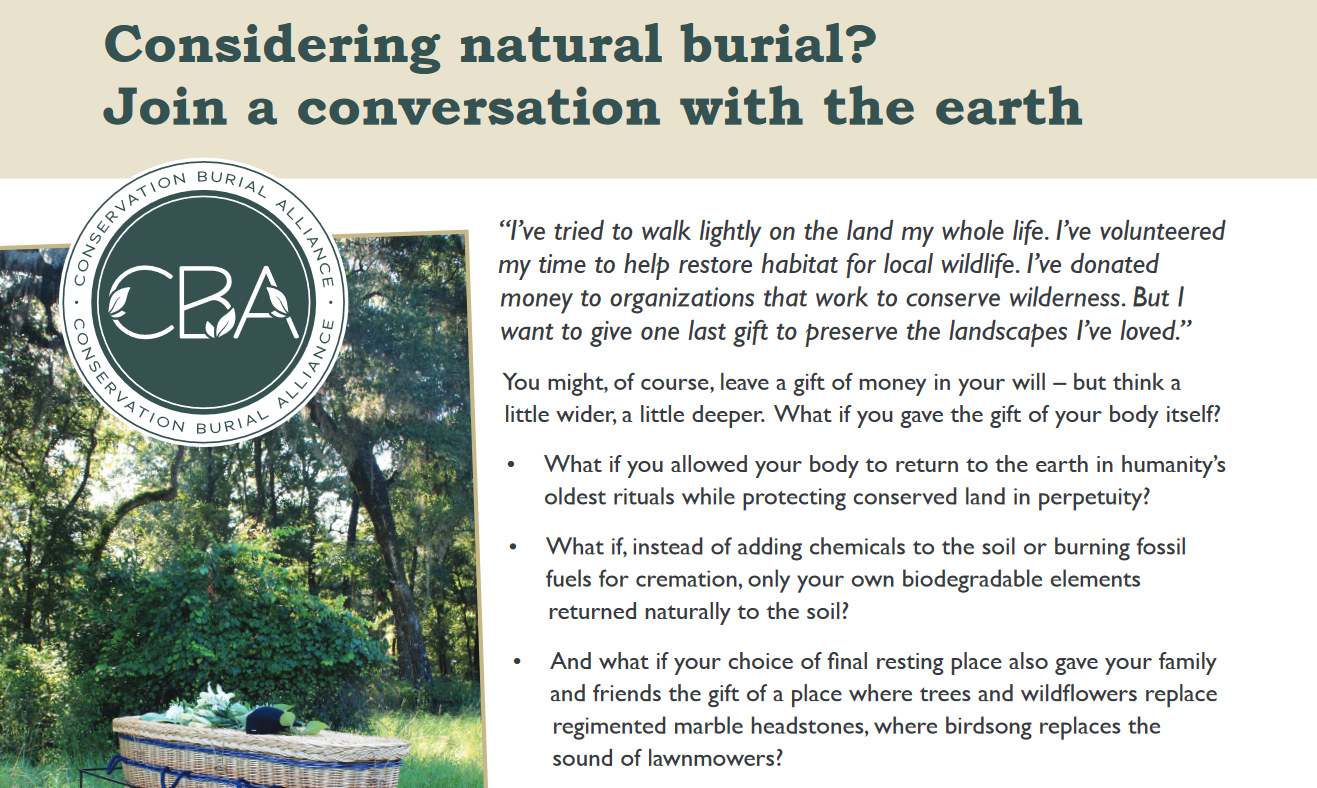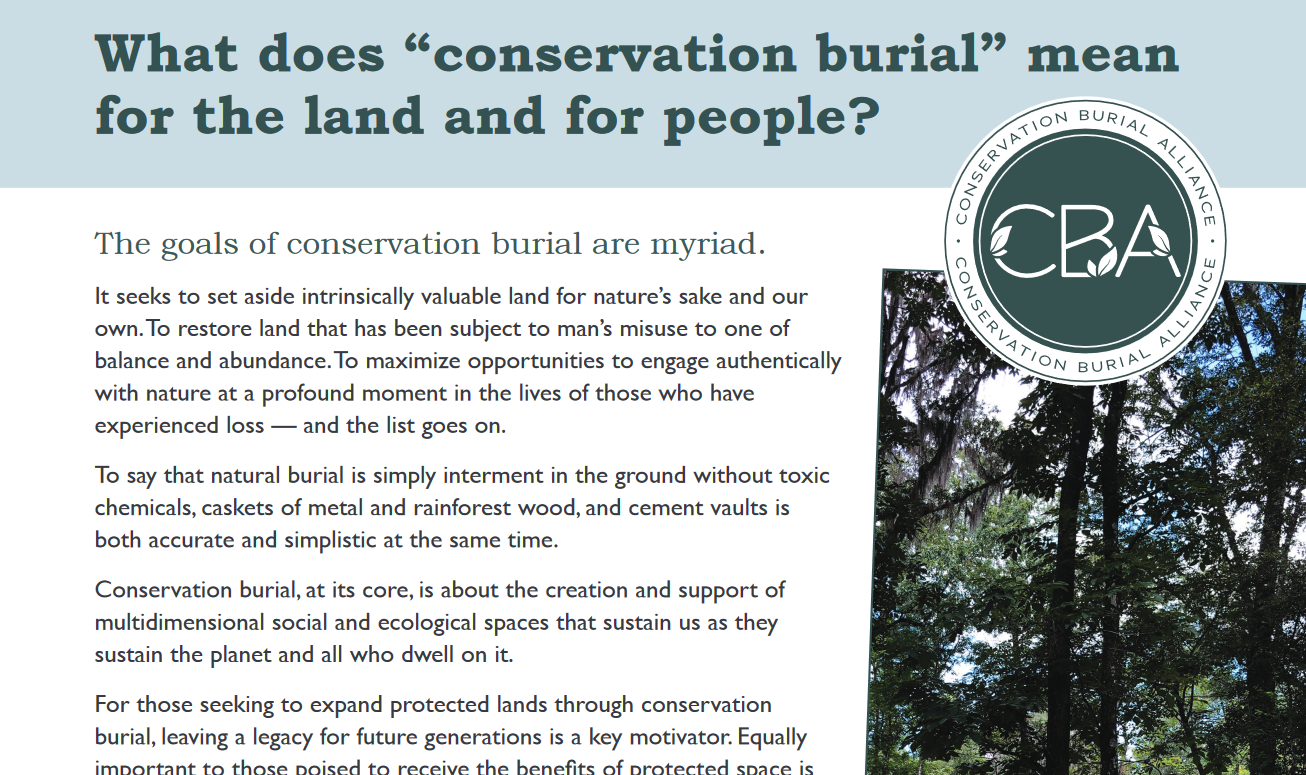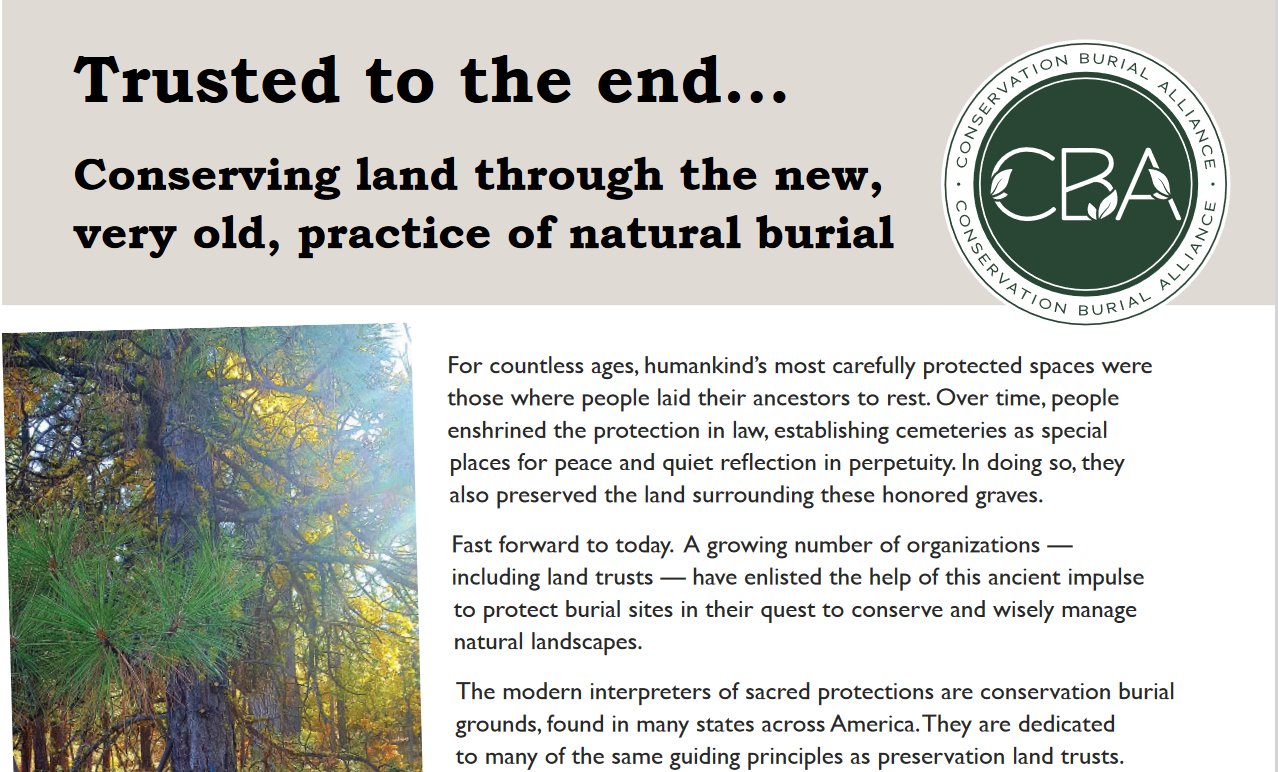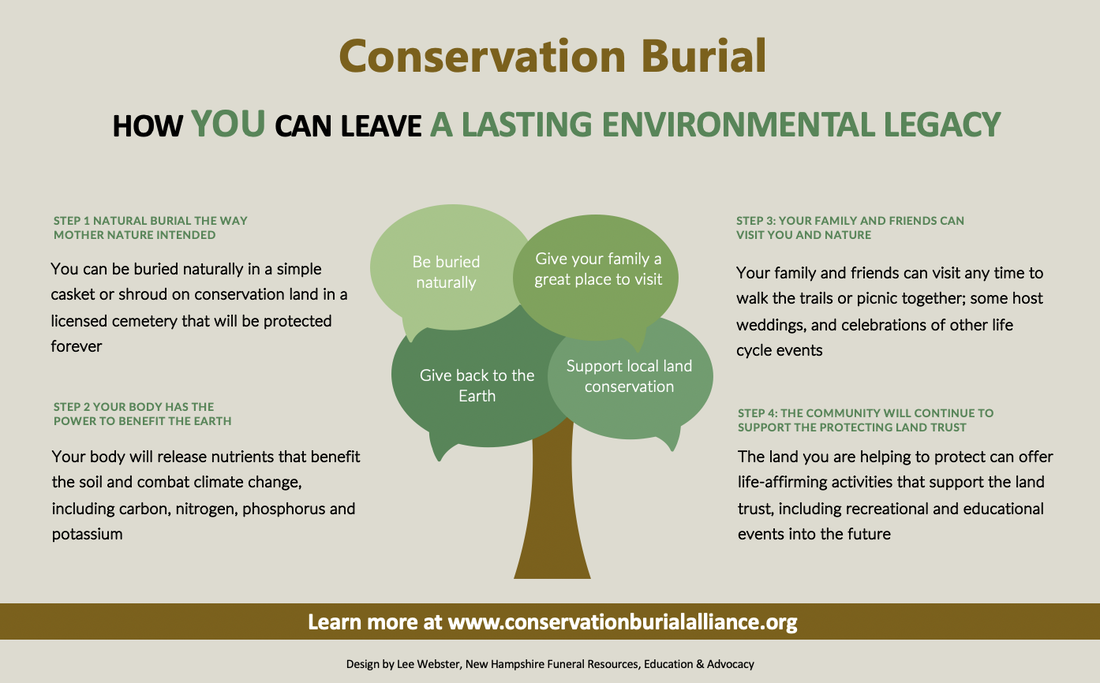Welcome to the Conservation Burial Alliance
|
The goals of conservation burial are myriad—to set aside intrinsically valuable land for nature's sake and our own, to restore land that has been subject to man's misuse to one of balance and abundance, to maximize opportunities to engage authentically with nature at a profound moment in the lives of those who have experienced loss—and the list goes on.
To say that natural burial is simply interment in the ground without toxic chemicals, precious wooden or metal caskets, and cement vaults is both accurate and simplistic at the same time. Conservation burial, at its core, is about the creation and support of multidimensional social and ecological spaces that sustain us as they sustain the planet and all who dwell on it. For those seeking to expand protected lands through conservation burial, leaving a legacy for future generations is a key motivator. Equally important to those poised to receive the benefits of protected space is the promise of enhanced connection of human and natural communities. |
View Deeply RootedConservation cemeteries are a vehicle for transformative experiences that include direct participation before and during a funeral, and ongoing opportunities for engagement through life-affirming activities such as bird-watching, hiking, weddings, baptisms, family picnic days, community educational events, and much more. —Lee Webster What does conservation burial hope to achieve?
|
The purpose of conservation: The greatest good to the greatest
number of people for the longest time.
— Gifford Pinchot
